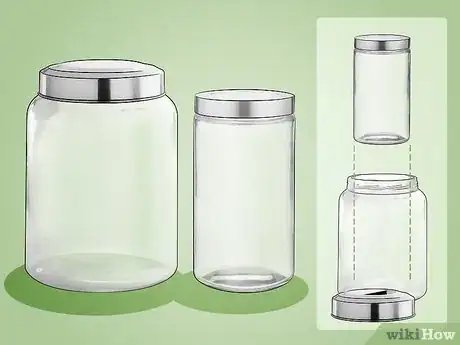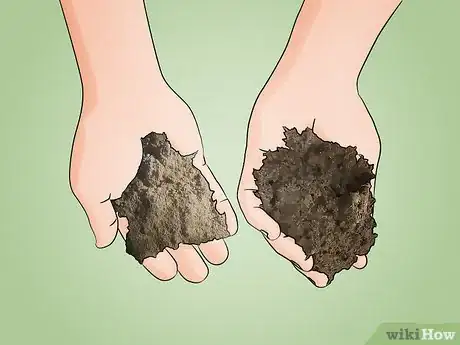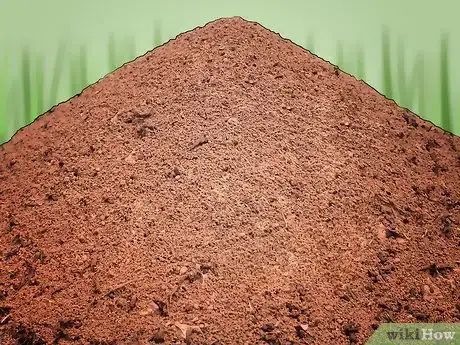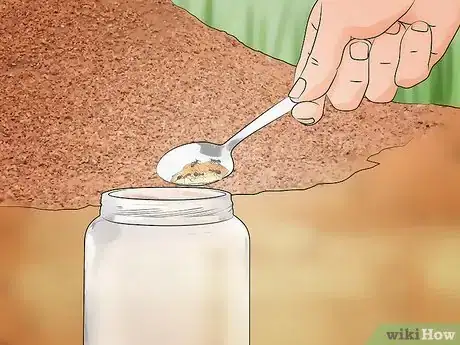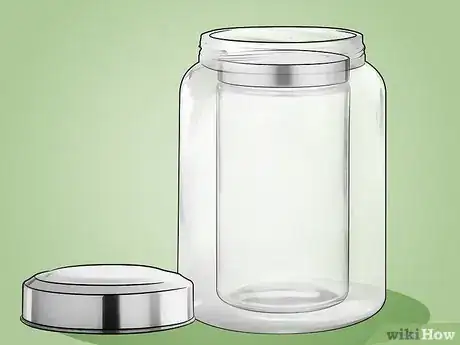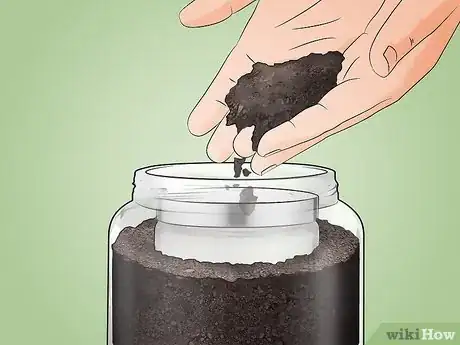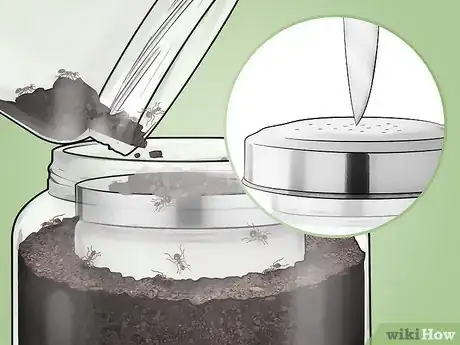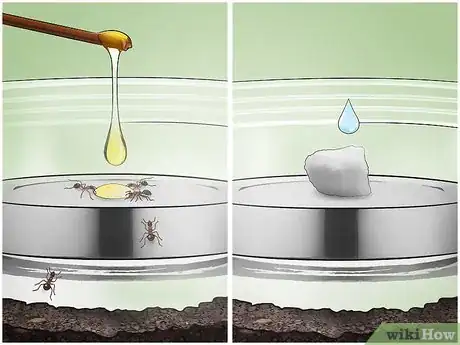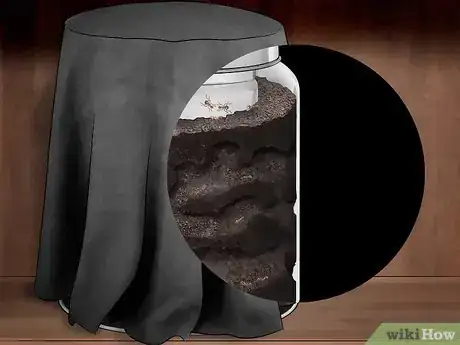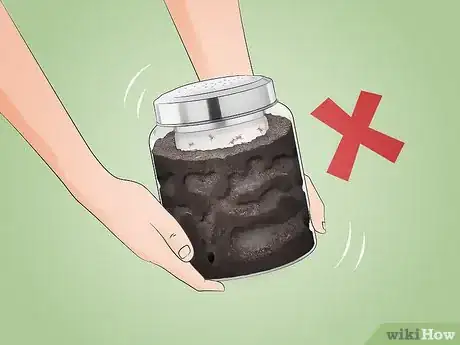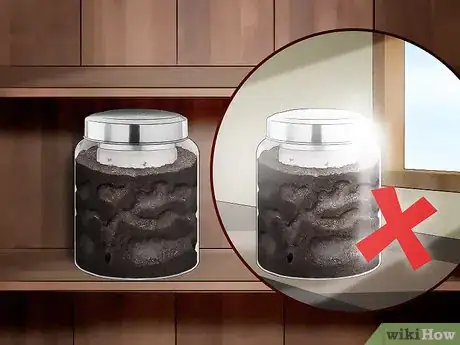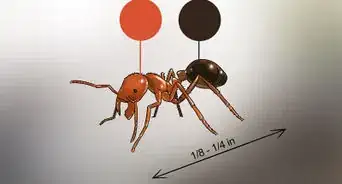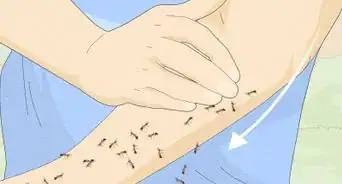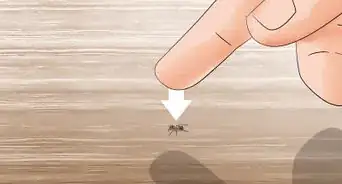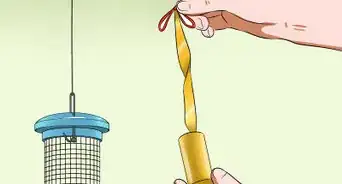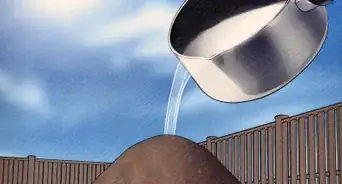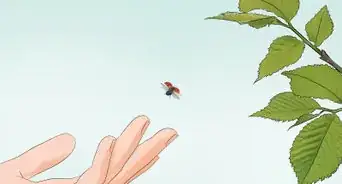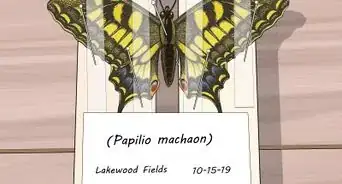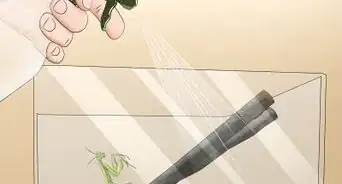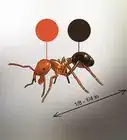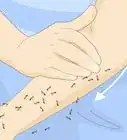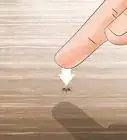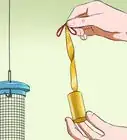This article was co-authored by Shweta Sharma. Shweta Sharma is a Biologist with the U.S. Environmental Protection Agency (EPA). With nearly ten years of experience, she specializes in insect management, integrated pest management, insect behavior, resistance management, ecology, and biological control. She earned her PhD in Urban Entomology and her MS in Environmental Horticulture from the University of Florida. She also holds a BS in Agriculture from the Institute of Agriculture and Animal Sciences, Nepal.
wikiHow marks an article as reader-approved once it receives enough positive feedback. This article received 19 testimonials and 80% of readers who voted found it helpful, earning it our reader-approved status.
This article has been viewed 611,012 times.
If you've ever examined an anthill and wondered what's beneath the surface, creating your own ant farm will be a fascinating learning experience. Introducing an ant colony to your own farm will give you a first-rate view of ants building intricate tunnels and paths, then scurrying through like they're on a mission. See Step 1 to learn how to make an ant farm using simple materials you may already have on hand.
Steps
Gathering Supplies and Ants
-
1Get two glass jars with lids. You'll need a large jar and a smaller one that just fits inside. The dirt and ants will be placed in the space between the small jar and the large jar. The small jar functions as a way to take up space in the middle so that the ant colony will build tunnels and lay eggs close to the outer edge, putting these processes in plain view. Skipping this step will allow the ants to burrow deep toward the middle of the jar, which they'll naturally want to do.[1]
- Different-sized canning jars are perfect for this project. But, if you want your ants to be happy, then buy a larger container.
- Look for jars without etching, print or raised numbers and letters. Plain, clear glass will give you the best view of the ants.
- If you'd prefer to have a flat ant farm, check out your local pet store and purchase a skinny aquarium. You can also order an ant farm setup from online retailers.
-
2Prepare a soil and sand mixture. The ants will need a loose substrate that stays moist and allows them to dig and tunnel. If you're planning to source the ants from your yard or a nearby area, your best bet is to use dirt they already naturally live in. Dig up enough dirt to fill up the extra space in your jar. Use a fork or your fingers to loosen the dirt until it's nice and fine. Now mix 2 parts dirt with 1 part sand - less if your dirt is already naturally quite sandy.
- If you aren't planning on getting your ants from a nearby location and the dirt you have on hand doesn't seem suitable, you can buy potting soil and sand from a gardening store and mix it to serve as your substrate.
- If you order an ant farm kit, it should come with the right mixture for those particular ants.
- You want the mix to be slightly moist, but not soaking wet. If it's too dry, the ants will dry out; if it's too wet, they'll drown.
Advertisement -
3Find an anthill. There are many species of ants and, by and large, they nest in the ground.[2] Look for anthills in slightly exposed areas in your yard. You'll know it's an anthill by observing the tell-tale volcano-shaped pile of small grains of dirt, with a tiny entrance hole near the top.
- Tracking ants is another good way to find an anthill. If you see a group of ants walking, follow them back to their nest.
- Observe the anthill to make sure you aren't dealing with fire ants or another type of ant that bites or stings badly. Brown field ants are a good bet. If you want to be on the safe side, order your ants online as part of an ant farm kit.
-
4Collect the ants. Once you've identified an ant colony, bring a jar with a few holes poked in the top (not one of your ant farm jars) outside, alone with a large spoon, and scoop some ants into the jar. 20 - 25 ants should be a good amount to get your ant farm started. Here are a few things to keep in mind:[3]
- The ants probably won't reproduce unless you include a queen in your ant farm. An ant colony's queen lays all the eggs, and a group of worker ants - those you're likely to see close to the surface of an anthill - are likely to be sterile. Therefore, if you want to see ants go through the process of laying eggs, you'll need to get a queen - which can be tricky and would require destroying the natural ant colony.
- If you're set on seeing the reproductive cycle, a better bet may be to order a kit that comes with a queen ant. That way, you won't have to worry about digging deep into the ant's nest to get what you need.
- Another method is to catch a queen during its nuptial flight and raise a colony from just a queen.
- If you create a farm without a queen, the ants will probably die within 3 - 4 weeks, which is their natural lifespan.
Assembling Your Farm
-
1Place a cap on the smaller jar and set it inside the larger one. To keep it centered in the middle of the larger jar, you can put a dab of glue or tape on the bottom before you set it inside. Make sure you put the lid on securely since you don't want ants accidentally falling in.[4]
-
2Fill the remaining space in the jar with the dirt mixture. Use a funnel to neatly fill the extra space with dirt, or spoon it in. The dirt should not be tightly packed; make sure it's nice and loose, so the ants will be able to move around. Leave about an inch of empty space at the top of the jar.[5]
- You will now have created a layer of dirt that will serve as the ants' home.
- The inch of empty space will keep the ants from climbing up the glass and out of the jar when you need to open the lid.
-
3Place the ants in the jar and screw on the top lid. Carefully drop the ants in the jar, making sure they all make it into the fine dirt you provided. Cover the jar and use an awl or a sharp knife to puncture it with tiny holes, to allow oxygen to reach the ants.[6]
- Make sure not to punch the holes too large, or the ants will escape and build a nest elsewhere.
- Don't cover the jar with cloth, as ants will be able to chew their way out.
Maintaining Your Farm
-
1Offer them food and moisture. In order to keep your ants happy, you can feed them every few days with a few drops of honey, jam, or pieces of fruit - ants love sugar! If you have a queen you will need to give the colony feeder insects to feed the next generation. Don't overdo it, or you'll have mold in your ant farm. Ants can get most of the moisture they need from a wet cotton ball with water and place it at the top of the jar.[7]
- Don't give the ants meat or other cooked food. This will attract other types of pests to your ant farm.
- Don't pour water into the jar. It'll get too wet, and the ants could drown.
-
2Cover the jar when you aren't watching the ants. Ants do their tunneling at night, in the dark. To replicate the environment they're used to, cover the jar with black cloth or construction paper when you're not watching the ants. If you forget to do this, the ants will be stressed out and much less active. They'll also tend to stay away from the glass and spend their time as close as possible to the center of the jar.[8]
-
3Don't shake the jar. Ants are fragile creatures, and shaking the jar or otherwise handling it roughly can cause them to die when their tunnels collapse on them. Handle the ant farm carefully.
-
4Store the farm in a warm room. Place it in a room that tends to stay at a good steady temperature. Don't place it in direct sunlight, or the glass jar might heat up too much and overheat the ants.
Expert Q&A
-
QuestionHow do you catch an ant queen?
 Shweta SharmaShweta Sharma is a Biologist with the U.S. Environmental Protection Agency (EPA). With nearly ten years of experience, she specializes in insect management, integrated pest management, insect behavior, resistance management, ecology, and biological control. She earned her PhD in Urban Entomology and her MS in Environmental Horticulture from the University of Florida. She also holds a BS in Agriculture from the Institute of Agriculture and Animal Sciences, Nepal.
Shweta SharmaShweta Sharma is a Biologist with the U.S. Environmental Protection Agency (EPA). With nearly ten years of experience, she specializes in insect management, integrated pest management, insect behavior, resistance management, ecology, and biological control. She earned her PhD in Urban Entomology and her MS in Environmental Horticulture from the University of Florida. She also holds a BS in Agriculture from the Institute of Agriculture and Animal Sciences, Nepal.
Biologist You need to wait for the colonies to start budding—this is when there are multiple queens ready to take flight for mating. The newly mated queens are those bigger ants that are wingless and are running around busy trying to find a place to start a new nest. Queens can be caught gently with your fingers or with the feather forceps.
You need to wait for the colonies to start budding—this is when there are multiple queens ready to take flight for mating. The newly mated queens are those bigger ants that are wingless and are running around busy trying to find a place to start a new nest. Queens can be caught gently with your fingers or with the feather forceps. -
QuestionIf the ants make too many eggs, what will I do?
 Kieran RoperCommunity AnswerReduce feeding amounts until they stop making more ants, the ants will still be "born" but if you stop feeding them as much/reduce the temperature by, say, 5ºC they will stop growing as much.
Kieran RoperCommunity AnswerReduce feeding amounts until they stop making more ants, the ants will still be "born" but if you stop feeding them as much/reduce the temperature by, say, 5ºC they will stop growing as much. -
QuestionWhat is the small jar in the main jar for?
 Community AnswerThe inner jar is filed with air and serves the purpose of maintaining a narrow area for the ants to build their tunnels. This ensures you will be able to see the tunnels. Without the small jar, the ants would tunnel deep into the main jar and you would not be able to see their tunnels.
Community AnswerThe inner jar is filed with air and serves the purpose of maintaining a narrow area for the ants to build their tunnels. This ensures you will be able to see the tunnels. Without the small jar, the ants would tunnel deep into the main jar and you would not be able to see their tunnels.
Warnings
- If you decide to feed your ants dead insects, ensure that they weren't poisoned, as it can hurt, or even kill, your 'colony'.⧼thumbs_response⧽
- NEVER mix two ant colonies together, they will fight until death and it is cruel to the ants. So if you're catching them not ordering them, make sure you only catch one hill.⧼thumbs_response⧽
- All ants can bite you, but rarely will they, so don't let this put you off, but if you are keeping stinging ants, they can bite AND have quite a nasty sting, so be very careful. Use gloves.⧼thumbs_response⧽
- Avoid any ants that are known to be very aggressive towards humans and have painful or dangerous bites unless you have experience keeping non stinging species.⧼thumbs_response⧽
- Do not cover the lid of the ant farm - the ants could suffocate. If you must cover it, use a paper towel secured with a rubber band and poke small holes with an earring or pin. Or a fine wire netting.⧼thumbs_response⧽
- Be careful of ant bites. If you can use gloves, that's great. To treat ant bites, use calamine lotion or a pharmacy approved itching cream. Ask your pharmacist for assistance.⧼thumbs_response⧽
Things You'll Need
- 16 glass jars of different sizes, with lids
- A jar to use for catching ants
- Dirt and sand to serve as substrate
- Local anthill
- Ants or a queen ant
- Cotton ball
- Honey
- 7 tubes
Expert Interview

Thanks for reading our article! If you'd like to learn more about building an ant farm, check out our in-depth interview with Shweta Sharma.
References
- ↑ https://www.artistshelpingchildren.org/kidscraftsactivitiesblog/2011/02/how-to-make-an-ant-farm-jar-and-watch-an-ant-colony-build-mazes/
- ↑ http://www.antnest.co.uk/keep.html
- ↑ https://makezine.com/projects/make-an-ant-farm/
- ↑ https://www.artistshelpingchildren.org/kidscraftsactivitiesblog/2011/02/how-to-make-an-ant-farm-jar-and-watch-an-ant-colony-build-mazes/
- ↑ https://www.artistshelpingchildren.org/kidscraftsactivitiesblog/2011/02/how-to-make-an-ant-farm-jar-and-watch-an-ant-colony-build-mazes/
- ↑ https://www.youtube.com/watch?v=MHCGRt_MRwY
- ↑ http://makezine.com/projects/make-an-ant-farm/
- ↑ http://www.leapingfromthebox.com/art/rlg/fantasticants.html
About This Article
To build an ant farm, start by placing a lidded glass jar inside a larger one and filling in the area between them with a mixture of slightly damp dirt and sand. Next, find some ants in your yard and gather them up using a large spoon. Once you’ve collected about 25 ants, put them in the large jar with the dirt. Then, put the lid on the large jar and use an awl or sharp knife to poke tiny holes in it so the ants can breathe. Finally, keep the jar covered with a black cloth while you’re not watching them to encourage them to dig closer to the sides of the jar. For advice on how often to give your ants food and water, read on!
